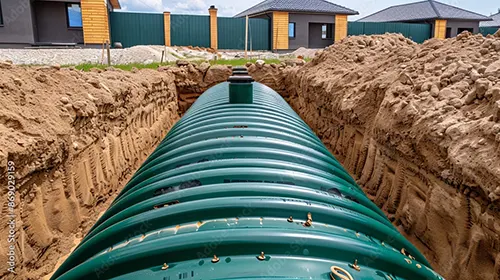
Design and Components
Evapotranspiration systems, also known as ET systems, are designed to evaporate wastewater into the air. They are typically only suitable for arid or semi-arid climates where evaporation rates are high and soil absorption rates are low. ET systems can utilize various components, such as shallow basins, spray heads, or subsurface pipes.
How they work
Evapotranspiration systems work by collecting wastewater in a shallow basin or applying it through spray heads or subsurface pipes. The wastewater is then exposed to the air, allowing evaporation to occur. As the water evaporates, nutrients and contaminants are left behind, promoting natural treatment.
Pros and cons
The main advantage of evapotranspiration systems is their ability to effectively treat wastewater without the need for a drainfield or direct discharge to the soil. They can be suitable for sites with limited space or challenging soil conditions. However, they are highly dependent on climate conditions and may not be suitable for regions with high rainfall or high groundwater levels.
Cost to purchase and maintain
The cost of purchasing and installing an evapotranspiration system will vary depending on factors such as system design, size, and labor costs. Maintenance costs are generally low, consisting mainly of periodic inspection and adjustments.
For more information, contact Morse Engineering and Construction.
Source: aboutseptictanks.com
